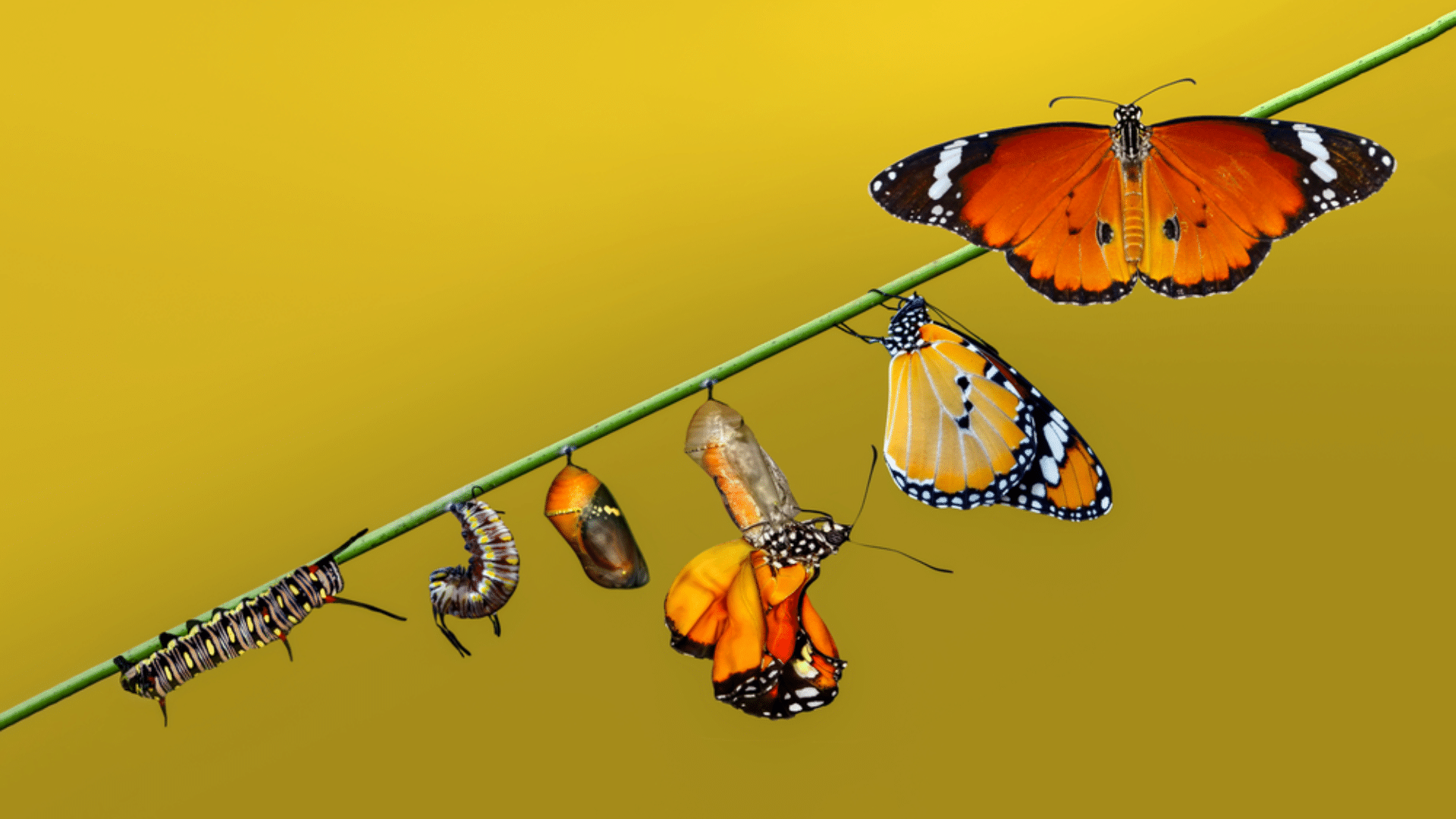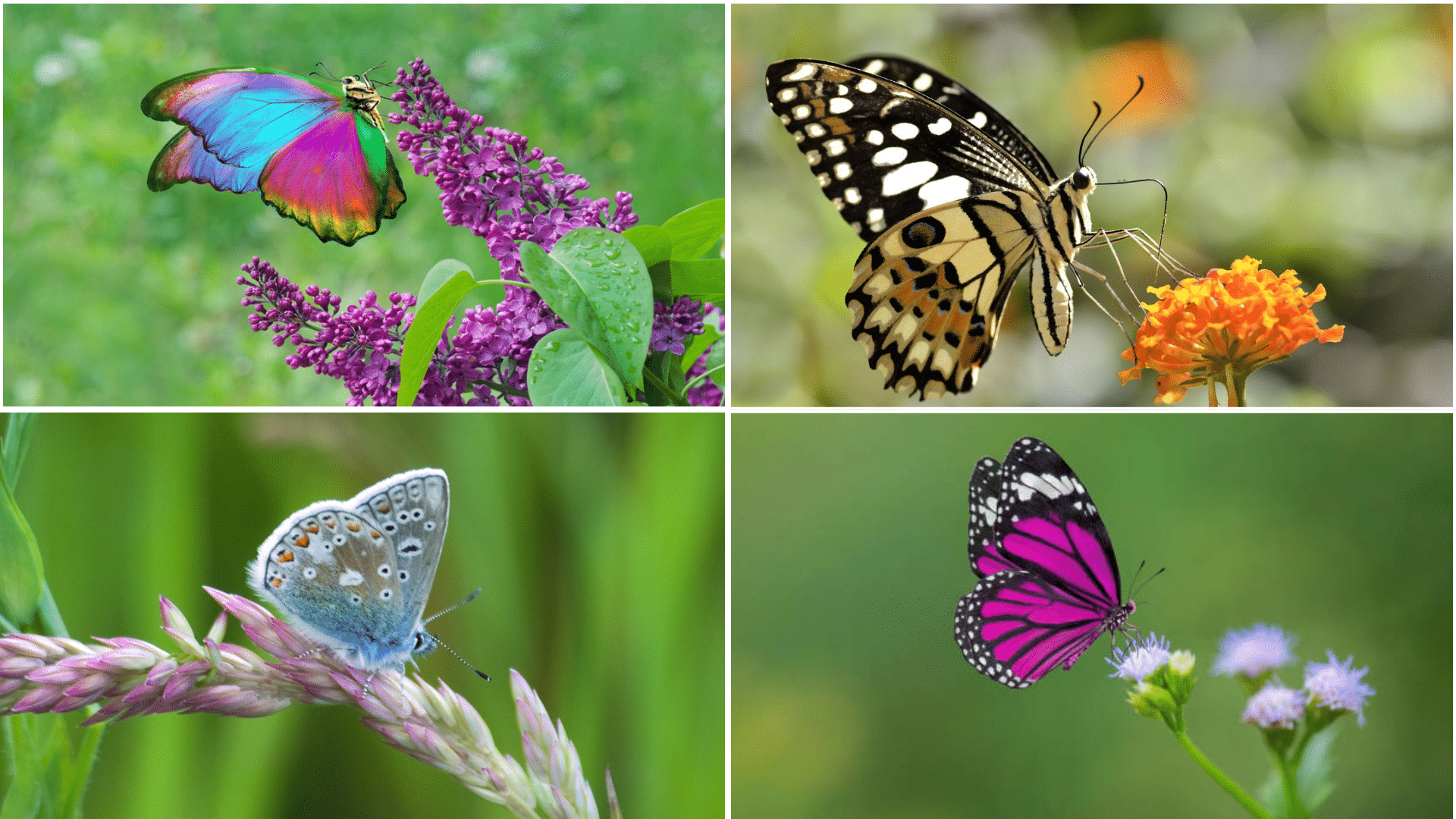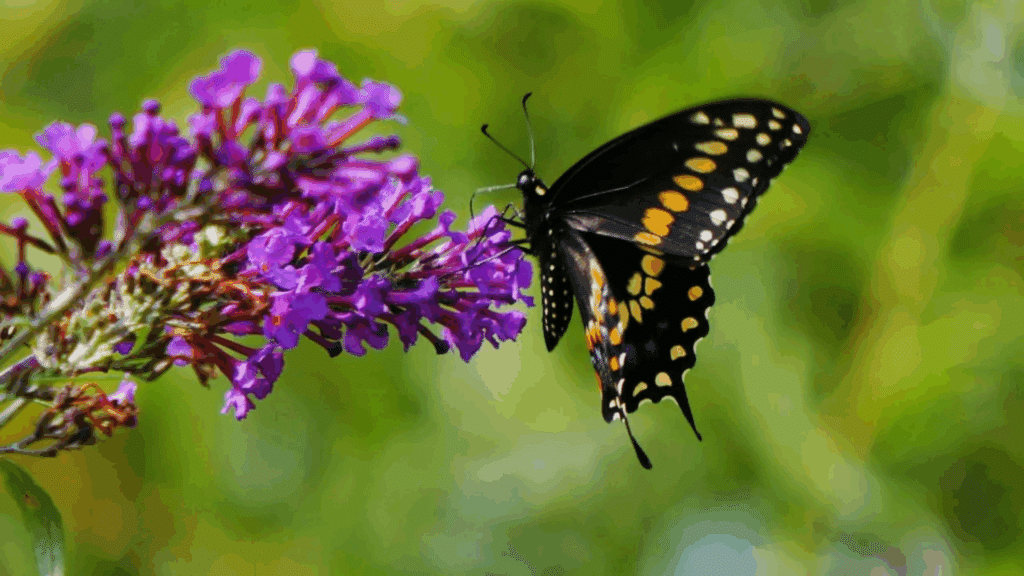Most people see butterflies as pretty insects that flutter around flowers.
But these tiny creatures hold some of the most amazing secrets in nature. They can travel thousands of miles, taste with their feet, and even see colors we can’t imagine.
This blog shares fun facts about butterflies that will change how you see these remarkable insects forever. You’ll learn about their superpowers, strange habits, and mind-blowing abilities that scientists are still studying today.
Get ready to be amazed by what these small but mighty creatures can do.
Everything You Should Know About Butterflies

Butterflies are among the most fascinating creatures on Earth. These colorful insects belong to the order Lepidoptera, which also includes moths. With over 17,500 species worldwide, butterflies come in countless shapes, sizes, and patterns.
Every butterfly starts life as an egg. The female lays her eggs on leaves that will feed her babies. Within days, tiny caterpillars hatch and begin eating. These caterpillars grow rapidly, shedding their skin multiple times as they get bigger.
The most amazing part comes next. The caterpillar forms a chrysalis around itself. Inside this protective casing, it transforms completely into a butterfly. This process takes about two weeks for most species.
Adult butterflies have four wings covered in tiny scales that create their beautiful colors. They taste with their feet, smell with their antennae, and see colors humans cannot perceive.
Fun Facts About Butterflies that You Should Know

Butterflies are among the most beautiful creatures in nature, capturing the attention of people with their colors and delicate wings. These remarkable insects play crucial roles in ecosystems and have evolved adaptations.
The following are fun facts about butterflies, each one revealing a unique aspect of their world.
1. Butterflies Taste With Their Feet
Butterflies have taste sensors on their feet, allowing them to identify suitable host plants for laying eggs. When they land, they “taste” the surface to determine if it’s the right plant for their caterpillars to feed on after hatching.
2. They Cannot Fly If They’re Cold
Butterflies are cold-blooded and rely on external warmth to fly. Their flight muscles require a body temperature of about 85°F (29°C). On chilly mornings, you’ll often see them sunbathing with wings spread to absorb heat.
3. Monarchs Migrate Thousands of Miles
Monarch butterflies are famous for their epic migration, traveling up to 3,000 miles from North America to central Mexico. This journey spans multiple generations, with each butterfly flying part of the distance before laying eggs for the next.
4. Some Butterflies Mimic Other Species
To avoid predators, certain butterflies mimic the appearance of more dangerous or unpalatable species. This form of mimicry, called Batesian mimicry, helps them survive by tricking predators into thinking they’re toxic or distasteful.
5. Butterfly Wings Are Covered in Scales
Butterfly wings are covered in thousands of tiny, overlapping scales. These scales give wings their color and patterns, and can even help camouflage or warn predators. When touched, the powdery residue left behind is actually these scales.
6. They Have a Proboscis for Drinking
Butterflies have a long, coiled tube called a proboscis, which acts like a straw for sipping nectar from flowers. When not in use, the proboscis stays curled up under the butterfly’s head, ready to unfurl when feeding.
7. Caterpillars Can Multiply Their Weight Many Times
A butterfly caterpillar, or larva, can increase its body weight up to 1,000 times or more during its short larval stage. This rapid growth is fueled by constant eating, mostly of leaves, before it transforms into a chrysalis.
8. Some Butterflies Are Active at Night
While most butterflies are diurnal, a few species are crepuscular or even nocturnal, flying at dusk or during the night. These butterflies often have muted colors and rely on scent or temperature cues to find mates and food.
9. Butterflies Use Ultraviolet Patterns
Many butterfly species have wing patterns only visible under ultraviolet light. These patterns help butterflies recognize each other, attract mates, or warn predators. Humans can’t see these UV patterns, but butterflies’ eyes are specially adapted for it.
10. Their Eyes See a Wide Spectrum
Butterflies have compound eyes made up of thousands of lenses, allowing them to see a broad spectrum of colors, including ultraviolet. This helps them locate flowers, navigate, and communicate with other butterflies through color signals.
11. Some Butterflies Live Only a Few Days
While some butterflies, like Monarchs, can live for months, others have very short lifespans. The adult stage of certain species lasts only a few days, just long enough to mate and lay eggs before dying.
12. Butterflies Can “Shiver” to Warm Up
Before flying on cool mornings, butterflies can rapidly vibrate their wings, a behavior called “shivering.” This generates heat in their flight muscles, raising their body temperature so they can take off and search for food or mates.
13. They Communicate With Pheromones
Butterflies use chemical signals called pheromones to communicate, especially during mating. Females often release pheromones to attract males from long distances, while males may use scent scales to mark territory or signal readiness to mate.
14. Some Butterflies Drink Tears
Certain butterflies, especially in tropical regions, have been observed drinking the tears of animals such as turtles or crocodiles. This behavior, called lachryphagy, provides them with essential minerals and salts not found in nectar.
15. Butterfly Eggs Come in Many Shapes
Butterfly eggs are incredibly diverse, coming in shapes like spheres, cylinders, or spindles. The surface texture can be smooth, ridged, or covered in tiny spikes, helping the eggs adhere to leaves and avoid detection by predators.
16. They Help Pollinate Plants
While not as efficient as bees, butterflies are important pollinators. As they feed on nectar, pollen sticks to their bodies and is transferred between flowers, aiding in plant reproduction and supporting healthy ecosystems.
17. Some Butterflies Are Masters of Camouflage
Certain species, like the dead leaf butterfly, have wing patterns that perfectly mimic leaves, bark, or other natural elements. This camouflage helps them avoid predators by blending seamlessly into their surroundings when at rest.
18. Butterflies Can Be Found on Every Continent Except Antarctica
Butterflies are incredibly adaptable and inhabit diverse environments worldwide, from rainforests and deserts to mountains and meadows. The only continent where butterflies are not found is Antarctica, due to its extreme cold.
19. Caterpillars Have Up to 4,000 Muscles
A caterpillar’s body is equipped with up to 4,000 muscles, far more than a human’s 600. These muscles help them crawl, grip leaves, and perform the complex movements required for molting and eventually forming a chrysalis.
20. Some Butterflies Feed on Rotting Fruit
While many butterflies prefer flower nectar, some species are attracted to rotting fruit, tree sap, or even animal dung. These alternative food sources provide essential nutrients, especially minerals and amino acids, for their survival.
21. Their Wings Are Transparent at First
When a butterfly first emerges from its chrysalis, its wings are soft, crumpled, and nearly transparent. The butterfly must pump fluid through the veins in its wings and wait for them to harden and dry before it can fly.
22. Butterflies Can “Play Dead”
Some butterflies use thanatosis, or “playing dead,” as a defense mechanism. When threatened, they may drop to the ground and remain motionless, making them less noticeable to predators until the danger has passed.
23. The Largest Butterfly Is the Queen Alexandra’s Birdwing
Native to Papua New Guinea, the Queen Alexandra’s birdwing is the world’s largest butterfly, with females boasting a wingspan of up to 12 inches (30 centimeters). Its striking size and colors make it highly sought after by collectors.
24. Some Butterflies Are Toxic
Certain butterflies, such as the Monarch, are toxic to predators due to chemicals accumulated from their larval host plants. Bright warning colors signal their toxicity, deterring birds and other potential predators from consuming them.
25. Butterflies Can Hear With Their Wings
Some butterflies have ears located at the base of their wings. These specialized structures enable butterflies to detect sound vibrations, allowing them to sense approaching predators, such as birds or bats, and react quickly to escape danger.
26. They Can Lay Hundreds of Eggs
A single female butterfly can lay anywhere from a few dozen to several hundred eggs during her lifetime. She carefully selects host plants that will provide the best food source for her future caterpillars.
27. Some Butterflies Engage in Mud-Puddling
Butterflies, especially males, often gather on wet soil, mud, or puddles to drink water rich in minerals and salts. This behavior, called “mud-puddling,” helps them obtain nutrients not found in nectar and is vital for reproduction.
28. Butterfly Antennae Are Used for Smelling
Butterfly antennae are highly sensitive and play a crucial role in detecting scents, especially pheromones released by potential mates. The club-shaped tips help them sense and navigate toward food sources and suitable habitats.
29. Butterflies Have Been Around for Millions of Years
Fossil evidence shows that butterflies have existed for at least 56 million years. Their ancient lineage means they evolved alongside flowering plants, developing specialized adaptations for feeding, reproduction, and survival.
30. Some Butterflies Have Tails to Confuse Predators
Certain butterfly species, like the swallowtail, have tails on their wings that resemble antennae. These tails can distract predators, causing them to attack the less vital part of the wing instead of the butterfly’s head or body.
31. Butterflies Can See Polarized Light
Butterflies are capable of detecting polarized light, which helps them navigate and orient themselves, especially during migration. This unique vision allows them to interpret sunlight patterns and find their way even on cloudy days.
32. They Undergo Complete Metamorphosis
Butterflies experience four distinct life stages: egg, larva (caterpillar), pupa (chrysalis), and adult. This complete metamorphosis allows them to occupy different ecological niches and reduces competition between young and adult butterflies.
33. Some Butterflies Hibernate
In colder climates, certain butterfly species hibernate during winter, entering a state called diapause. They may overwinter as eggs, caterpillars, pupae, or adults, emerging in spring when temperatures rise and food becomes available.
34. Butterfly Wings Can Reflect Light
Many butterflies, like the Blue Morpho, have microscopic scales that reflect light, creating iridescent colors. This structural coloration is not due to pigments but to the way light bounces off the wing’s surface, producing dazzling effects.
35. Some Butterflies Are Social
While most butterflies are solitary, a few species exhibit social behaviors, gathering in large groups for roosting or migration. These gatherings can offer protection from predators and help maintain body warmth during cooler periods.
36. Butterflies Can Learn and Remember
Studies have shown that butterflies can learn from experience and remember certain cues, such as flower colors or locations. This ability helps them find food more efficiently and avoid previously encountered dangers in their environment.
37. They Have Short, Clubbed Antennae
Butterfly antennae are typically short and end in a club-like shape, distinguishing them from moths, whose antennae are often feathery or threadlike. This feature helps scientists and enthusiasts easily tell butterflies and moths apart.
38. Some Butterflies Are Born Without Mouthparts
Certain adult butterflies, such as the Luna Moth, do not have functional mouthparts and cannot eat. They live solely off the energy stored from their caterpillar stage, surviving just long enough to mate and lay eggs.
39. Butterflies Can Be Found at High Altitudes
Some butterfly species thrive in mountainous regions, living at elevations above 16,000 feet (4,900 meters). These high-altitude butterflies have adapted to cold, thin air and often have darker wings to absorb more heat from the sun.
40. They Can Be Affected by Climate Change
Butterflies are sensitive indicators of environmental change. Shifts in temperature, weather patterns, and habitat loss due to climate change can disrupt their life cycles, migration routes, and food sources, threatening many species worldwide.
41. Some Butterflies Have Eyespots
Many butterflies have eye-like patterns on their wings called eyespots. These markings can startle or confuse predators, making the butterfly appear larger or more dangerous, or divert attacks away from vital body parts.
42. Butterflies Are Important in Art and Culture
Butterflies have inspired countless works of art, literature, and symbolism across cultures. They often represent transformation, beauty, and the fleeting nature of life, appearing in everything from ancient myths to modern tattoos.
43. Some Butterflies Are Endangered
Habitat destruction, pesticide use, and climate change have put many butterfly species at risk of extinction. Conservation efforts focus on protecting habitats, planting native plants, and reducing chemical use to help preserve butterfly populations.
44. Butterflies Can Cross Oceans
A few butterfly species, like the Painted Lady, are capable of crossing vast distances, including oceans, during migration. These long journeys are aided by favorable winds and the butterflies’ remarkable endurance and navigational skills.
45. They Have a Unique “Sipping” Motion
When feeding, butterflies use a rhythmic “sipping” motion with their proboscis, drawing nectar up in pulses. This technique allows them to efficiently extract nectar from deep within flowers, maximizing their energy intake with minimal effort.
46. Some Butterflies Are Born in Winter
In mild climates, certain butterfly species can emerge during winter months. These winter butterflies are adapted to cooler temperatures and may take advantage of early-blooming flowers or mild weather to feed and reproduce.
47. They Have Inspired Scientific Findings
Butterflies have contributed to scientific advancements, such as the study of genetics, mimicry, and structural coloration. Their unique adaptations and life cycles continue to inspire research in biology, materials science, and environmental conservation.
Wrapping It Up
These butterfly facts show us that nature never stops surprising us.
From butterflies that migrate across continents to species that fool predators with fake eyes, these insects prove that small doesn’t mean simple.
The next time you see a butterfly in your garden, remember what you’ve learned today.
Share these fun facts about butterflies with friends and family; they’ll never look at butterflies the same way again.


















